What Are the Factors that Affect the Production Efficiency of RDF Rod Making Machine?
The production efficiency of RDF rod making machine will be affected by many factors. The following are some of the main factors:
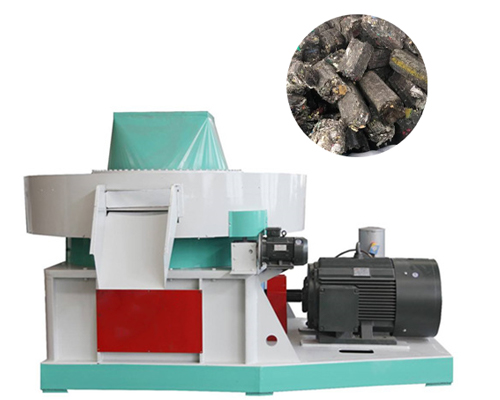
1). Raw material characteristics
1. Raw material particle size: When the raw material particle size is moderate and uniform, the feeding of the rod making machine is smooth, and the material can be better compressed and transfer pressure during the molding process, thereby improving production efficiency. If the raw material particle size is too large, it may cause the feed port to be blocked; if the particle size is too small, it may affect the density and strength of the fuel rod, and may also cause dust to fly, affecting the production environment and the normal operation of the equipment.
2. Raw material moisture content: Too high or too low raw material moisture content will have an adverse effect on production efficiency. If the moisture content is too high, the evaporation of water will consume a lot of heat during the rod making process, making it difficult to shape the material, and may also cause cracking, deformation and other problems in the molded fuel rods, and even unable to produce normally; if the moisture content is too low, the material is too dry and lacks the necessary viscosity, which is difficult to shape under pressure, which will increase the wear and energy consumption of the equipment and reduce production efficiency.
3. Type of raw material: Different types of raw materials have different physical and chemical properties, and their adaptability to rod making machines is also different. For example, wood raw materials are relatively easy to shape and have high production efficiency; while some raw materials with low fiber content and loose texture, such as rice husks, are difficult to shape and may require special adjustments to the equipment or the addition of auxiliary agents to ensure production efficiency.
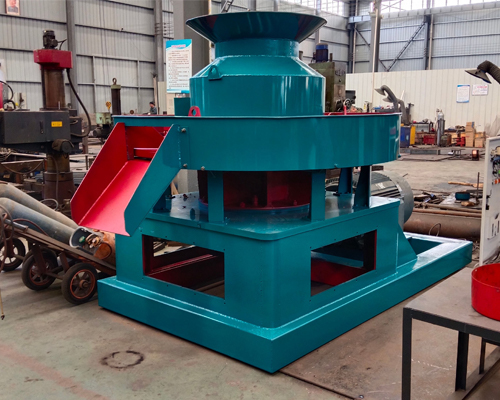
2).1. Equipment performance
Model and power of rod making machine: Generally speaking, rod making machines with larger models and higher power have relatively strong production capacity and can process more raw materials and produce more fuel rods per unit time. But at the same time, the investment cost and operating energy consumption of the equipment will also increase accordingly. Enterprises need to choose suitable equipment according to their own production scale and economic strength.
2. Structural design of equipment: Reasonable structural design can make the flow of materials in the rod making machine smoother and the pressure distribution more uniform, thereby improving the molding efficiency and product quality. For example, a rod making machine with a spiral propulsion feeding structure can better control the feeding speed and feeding amount to ensure the continuity of production; and a rod making machine with a multi-stage compression structure can gradually compact the material at different pressure stages to improve the density and strength of the fuel rods.
3. Automation of equipment: A rod making machine with a high degree of automation can realize functions such as automatic feeding, automatic molding, and automatic discharging, which reduces manual intervention, reduces labor intensity, improves the stability and continuity of production, and effectively improves production efficiency. In addition, the automatic control system can also monitor the operating status of the equipment in real time, promptly discover and solve faults, and avoid production stagnation caused by equipment failure.
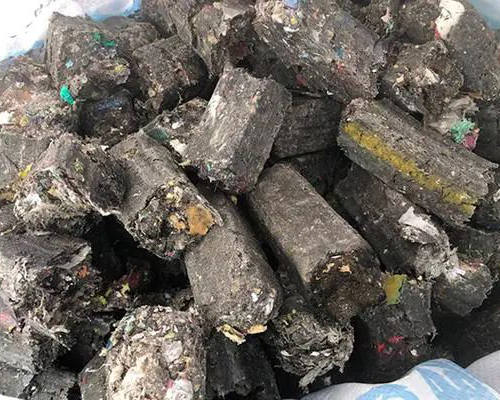
3). Production process parameters
1. Molding pressure: Appropriate molding pressure is one of the key factors to ensure the quality and production efficiency of fuel rods. If the pressure is too small, the material cannot be compacted and molded, and the produced fuel rods have low density and poor strength; if the pressure is too large, although it can improve the quality of the fuel rods, it will increase the energy consumption and wear of the equipment, and it may also cause problems such as excessive extrusion and overheating of the material during the molding process, affecting production efficiency and product quality.
2. Molding temperature: The molding temperature has an important influence on the plasticity and fluidity of the material. Within a certain temperature range, appropriately increasing the molding temperature can make the material softer and easier to mold, reduce the molding pressure, and improve production efficiency. However, if the temperature is too high, the material may be carbonized and decomposed, affecting the performance of the fuel rod; if the temperature is too low, the material is difficult to form, and even the mold may be blocked.
3. Feeding speed: The feeding speed should match the production capacity of the rod making machine. If the feeding speed is too fast, the material will accumulate in the molding cavity and cannot be compacted and formed in time. Problems such as uneven surface and uneven internal structure of the fuel rod may occur, and even the equipment may be damaged; if the feeding speed is too slow, the utilization rate of the equipment will be reduced, affecting production efficiency.
4) Equipment maintenance and operation
1. Daily maintenance of equipment: Regularly maintain the rod making machine, clean up the debris, dust and accumulated materials inside the equipment in time, check whether the various parts of the equipment are operating normally, replace worn parts, etc., to ensure the good condition of the equipment, reduce the occurrence of equipment failures, and improve the operating efficiency of the equipment.
2. Skill level of operators: Operators who are proficient in the operating procedures and technical points of the rod making machine can adjust the production process parameters in time according to the characteristics of the raw materials and the operation of the equipment, and reasonably control the feeding speed, molding pressure and temperature, etc., to ensure the stable operation and efficient production of the equipment. On the contrary, unskilled operators may cause equipment failure, production interruption and other problems due to improper operation, affecting production efficiency.
5).Model
Model | Power(KW) | Capacity(T/H) | Mold quantity | Roll quantity | Over dimension(MM) |
9JK-2600 | 75 | 1-2 | 52 | 2 | 2647*2100*1900 |
9JK-3500 | 110 | 2-3 | 72 | 2 | 3250*2600*2000 |
9JK-4500 | 132 | 3-4 | 88 | 2 | 3350*2800*2200 |
9JK-5000 | 160 | 4-5 | 100 | 2 | 3000*2300*2000 |
9JK-5500 | 160 | 4-5 | 102 | 2 | 3000*2400*2000 |
9JK-6500 | 200 | 4-5 | 120 | 3 | 4400*2970*2495 |
-
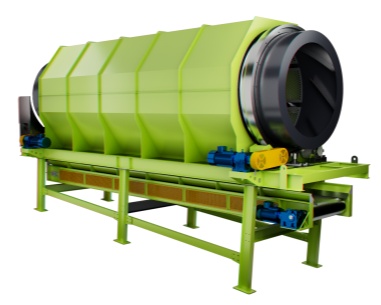 Trommel screenTrommel screen, also known as drum screens, are widely used in various industries for sorting and separating materials.Get Quote
Trommel screenTrommel screen, also known as drum screens, are widely used in various industries for sorting and separating materials.Get Quote -
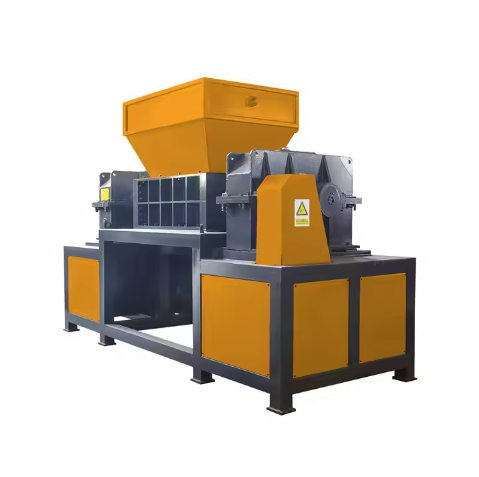 Crop straw double shaft shreddApplications:Biomass Energy Production: Shredded straw can be used as a feedstock for bioenergy plants to produce electricity or heat.Livestock Feed: Reduced-si...Get Quote
Crop straw double shaft shreddApplications:Biomass Energy Production: Shredded straw can be used as a feedstock for bioenergy plants to produce electricity or heat.Livestock Feed: Reduced-si...Get Quote -
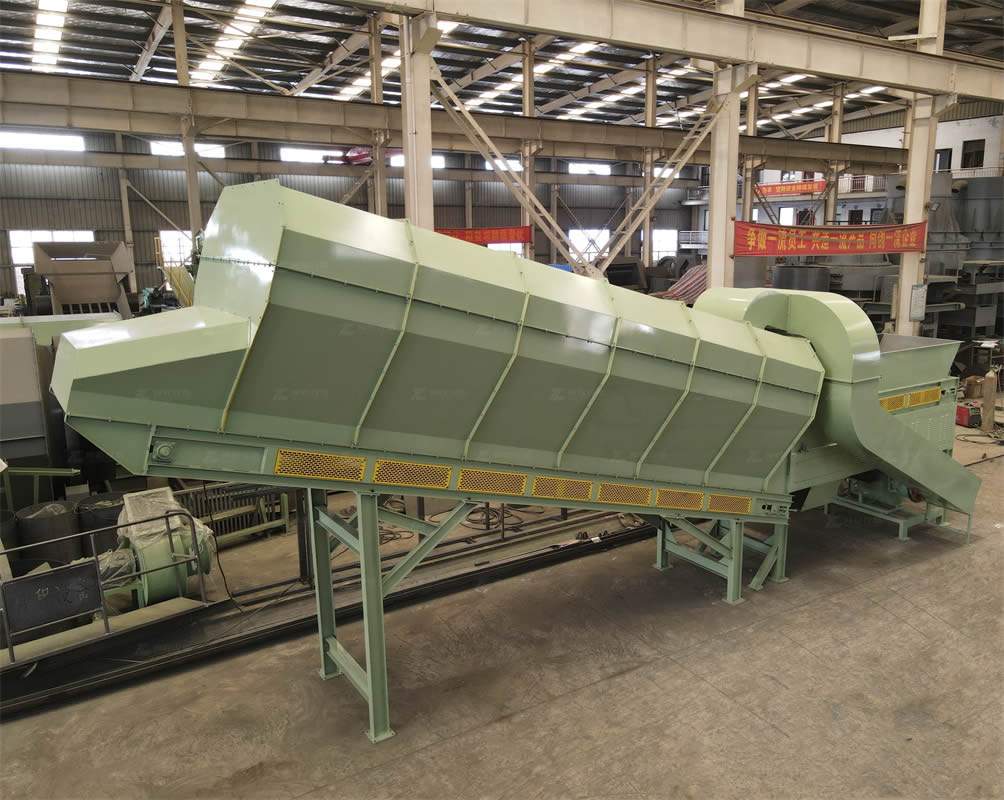 Zhongcheng Air Drum SeparatorAir drum separators effectively separate lightweight materials (e.g., plastics, paper) from heavier materials (e.g., metals, glass). This high efficiency is cru...Get Quote
Zhongcheng Air Drum SeparatorAir drum separators effectively separate lightweight materials (e.g., plastics, paper) from heavier materials (e.g., metals, glass). This high efficiency is cru...Get Quote
-
2024-04-13Vibrating FeederA vibrating feeder is a mechanical device used to convey materials, typically in bulk, from one location to another in a controlled manner. This equipment is co...
-
2024-08-07Tire double shaft shredderOperation:Feeding: Whole or pre-cut tires are fed into the shredder through an inlet hopper.Shredding: As the tires enter the shredding chamber, the rotating cu...
-
2025-03-03Mini Copper Wire GranulatorThe copper wire granulator machine is a device specially used to process waste wires and cables. Its main function is to separate the copper and plastic in the ...
-
2023-01-11Trommel screenTrommel screen, also known as drum screens, are widely used in various industries for sorting and separating materials.
-
2024-06-07Zhongcheng Air Drum Separator in MSWAir drum separators effectively separate lightweight materials (e.g., plastics, paper) from heavier materials (e.g., metals, glass). This high efficiency is cru...



